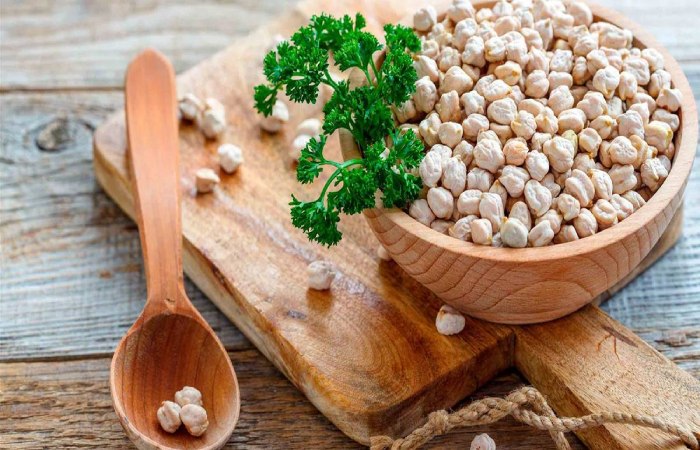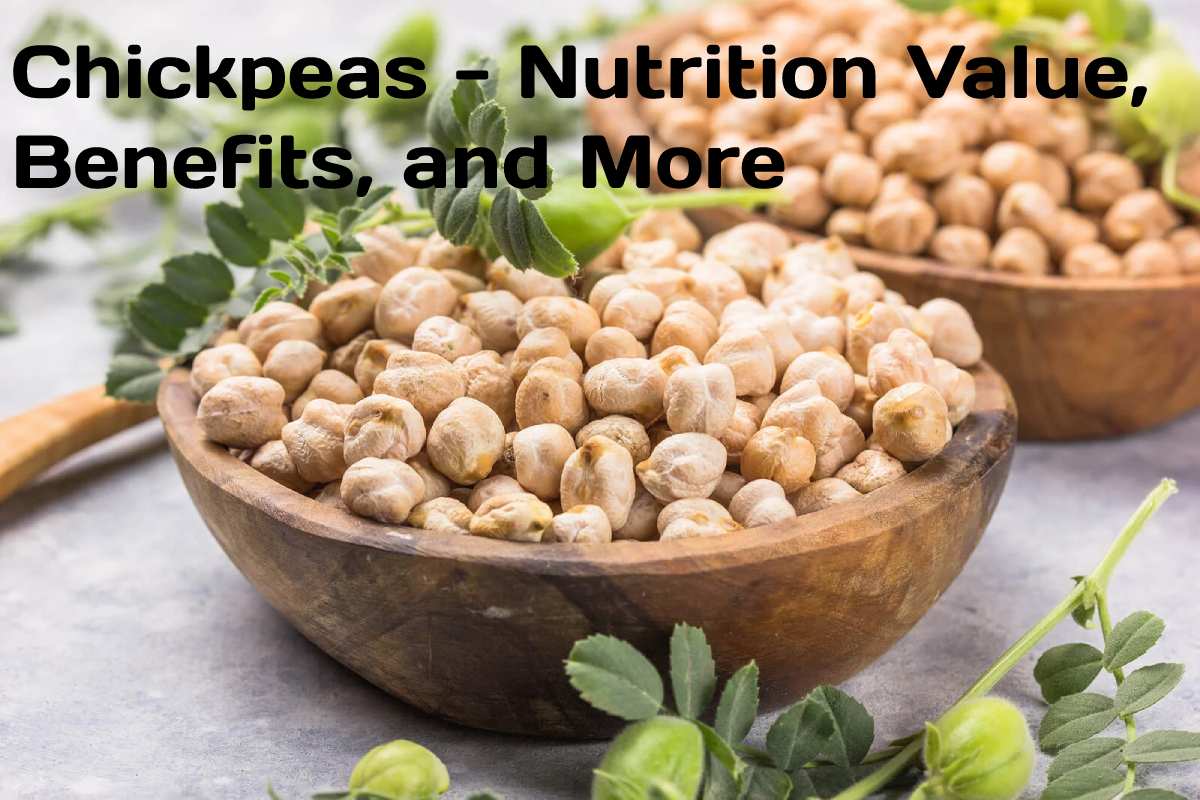Table of Contents
Chickpeas
Chickpeas are 1 of the most nutritious legumes we find, a very present ingredient in traditional Mediterranean cuisine. It is also widely used in Arab cuisine, where it is consumed mainly in hummus and falafels, and in India, where it is often part of dhals and curries. In this post, we present the properties of chickpeas and their nutritional value.
Nutritional Value of Chickpeas
Legumes have endless properties! Chickpeas, lentils, beans, etc. They will always be the perfect ingredient to add to your dishes.
Due to their high protein content, chickpeas are a favourite among vegetarians and vegans. They are also trendy in fitness cuisine because they have little fat and low energy density, which means they contain very few calories!
In addition, its low caloric intake is balance by its high nutrient content: it is rich in vitamins, minerals, and fibre.

Chickpeas 100 g (dry)
Calories: 310 calories
Fats: 6 g
carbohydrates: 44 g
proteins: 19 g
Fibre: 16 g
Sugar: 2 g
Mineral salts: 2,9 g
Chickpeas 100 g (cooked)
Calories: 119 calories
Fats: 2 g
Carbohydrates: 17 g
Proteins: 9 g
Fibre: 10 g
Sugar: 1 g
Mineral salts: 0,9 g
Properties and Benefits
The Chickpea is a legume whose consumption has been recorded since ancient Egypt. It promotes by Charlemagne, who urged farmers to cultivate this Food, which believes in medicinal properties.
Chickpeas are a source of carbohydrates, proteins, and fibre, which makes them an ideal food for obtaining energy, especially for people who carry out vigorous physical activities.
Also, its fibre content helps regulate intestinal transit and fights constipation. It also slows down the interest in carbohydrates and lowers cholesterol levels.
Another of this legume’s properties is its high potassium content, and it contributes to eliminating liquids, which impacts relief for arterial hypertension problems.
For pregnant women, the consumption of chickpeas is also beneficial since they contain folic acid, known as vitamin B9, which prevents malformations in the fetus.
Chickpea Varieties
There are about 40 species of chickpeas, but the most common in Spain is four, according to the Organization of Agriculture, Fisheries, and Food. After the genetic improvements assume in our country at the end of the eighties, the other hybrid varieties that have become popular in the market due to their versatility in the kitchen emerged. The original ones are:
– Castilian Chickpea. Medium or large in size, round and yellowish, it is the most consumed in Spain.
– Milky white chickpea. Flattened and elongated, almost white cream. The most popular in Andalusia and Extremadura, used for stews and traditional dishes.
– Andalusian veined chickpea. Large size, elongated silhouette, and less wrinkled but veiny skin. Originally from Granada and a fundamental ingredient of Andalusian stews.
– Pedrosillano chickpea. Very small and round, it requires more cooking time but provides a milder flavour. Originally from the Salamanca town of Pedrosillo el Ralo from which it takes its name, it is also trendy in Castile and Andalusia.
Where and how do Chickpeas grow?
These legumes have become increasingly popular and are now grown in many countries. Chickpeas are abundant in prominent areas in North Africa, Afghanistan, Pakistan, Mexico, Australia, Spain, and Turkey.
These tasty balls are born from a herbaceous plant that can reach up to a meter in height and hide in green pods about three centimetres long so that they will camouflage among the leaves. Each pod keeps one or two edible seeds, which are precisely the chickpeas as we know and consume them. This plant, called cancer arietinum, doesn’t need a lot of water, so you might think it’s pretty easy to please. However, it is very fond of subtropical climates, so it lacks all the heat it needs in temperate climates and is more challenging to grow.
Is Chickpea a good source of protein?
Chickpea is an ally of vegetarians because it is an excellent source of protein and, therefore, a great alternative to meat.
Let’s compare the protein content of different foods per 100 grams: while chicken breast or beef fillet contains an average of 20 to 24 grams and salmon 18 to 20 grams, cooked chickpeas offer nine grams of protein for every 100 grams. Chickpeas fall short in comparison but are a good alternative as a vegetable protein.
Tip from our editor: For those on a diet that falls short of their daily protein needs, the perfect solution comes in powder form! Our high-quality vegan protein will be your best daily supplement for sports. It is composed of proteins from different sources: peas, hemp, rice, and sunflower, and does not contain soy. A good protein shot for your muscles!
Conclusion
Chickpeas are an excellent source of protein, fermentable fibres (exceptionally resistant starch), and are rich in phytosterols, isoflavones, carotenoids, calcium, magnesium, potassium, and polyunsaturated fatty acids. For all this, they are a highly recommended food that, like other legumes, has a positive effect on the cardiovascular level and prevents diabetes, hypertension, and cancer.
Also Read: Foods That Boost the Immune System

